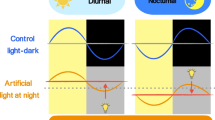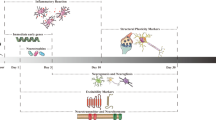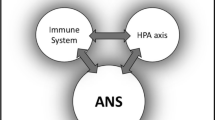Abstract
The olfactory system in rats is part of the limbic region with extensive afferent connections with brain areas involved in the regulation of behaviour and autonomic responses. The existence of the endothelin system and catecholaminergic neurons in the olfactory bulb suggests that endothelins may modulate noradrenergic transmission and diverse olfactory mediated processes. In the present work we studied the effect of endothelin-1 and -3 on neuronal norepinephrine release and the short-term regulation of tyrosine hydroxylase in the olfactory bulb. Results showed that both endothelins increased tyrosine hydroxylase activity through the activation of a non-conventional endothelin G-protein coupled receptor, coupled to the stimulation of protein kinase A and C, as well as Ca2+/calmodulin-dependent protein kinase II. On the other hand, neither endothelin-1 nor endothelin-3 modified tyrosine hydroxylase total protein levels, but both peptides increased the phosphorylation of serine residues of the enzyme at sites 19 and 40. Furthermore, endothelins enhanced norepinephrine release in olfactory neurons suggesting that this event may contribute to increased tyrosine hydroxylase activity by reducing the feedback inhibition. Taken together present findings show a clear interaction between the endothelin system, and the catecholaminergic transmission in the olfactory bulb. Additional studies are required to evaluate the physiological functions regulated by endothelins at this brain level.









Similar content being viewed by others
References
Cain DP (1974) The role of the olfactory bulb in limbic mechanisms. Psychol Bull 81:654–671. doi:10.1037/h0036954
Kawasaki H, Watanabe SH, Ueki SH (1980) Changes in blood pressure and heart rate following bilateral olfactory bulbectomy in rats. Physiol Behav 24:51–56. doi:10.1016/0031-9384(80)90013-X
Seller H (1991) Central baroreceptor reflex pathways. In: Persson PB, Kirchheim HR (eds) Baroreceptor reflexes. Springer-Verlag, Berlin, pp 45–74
Edwars DA, Farzad RN, Paige W (1992) Pathways linking the olfactory bulbs with the medial preoptic anterior hypothalamus are important for intermale aggression in mice. Physiol Behav 53:611–615. doi:10.1016/0031-9384(93)90162-9
Kohzuki M, Chai SY, Paxinos G et al (1991) Localization and characterization of endothelin receptor binding sites in the rat brain visualized by in vitro autoradiography. Neuroscience 42:245–260. doi:10.1016/0306-4522(91)90162-H
Langub MC Jr, Watson RE, Herman JP (1995) Distribution of natriuretic peptide precurson mRNAs in the rat brain. J Comp Neurol 356:183–199. doi:10.1002/cne.903560205
Kurokawa K, Yamada H, Ochi J (1997) Topographical distribution of neurons containing endothelin type A receptor in the rat brain. J Comp Neurol 389:348–360. doi :10.1002/(SICI)1096-9861(19971215)389:2<348::AID-CNE11>3.0.CO;2-H
Wright JW, Harding JW (1997) Important roles for angiotensin III and IV in the brain rennin-angiotensin system. Brain Res Rev 25:96–124. doi:10.1016/S0165-0173(97)00019-2
Davenport AP, Maguire JJ (2006) Endothelin. In: Moncada S, Higgs A (eds) Handbook of experimental pharmacology 176/I—the vascular endothelium I. Springer-Verlag, Berlin, pp 295–329
Schneider MP, Boensen EI, Pollock DM (2007) Contrasting actions of endothelin ETA and ETB receptors in cardiovascular disease. Annu Rev Pharmacol Toxicol 47:731–759. doi:10.1146/annurev.pharmtox.47.120505.105134
di Nunzio AS, Legaz G, Rodano V et al (2004) Modulatory effect of endothelin 1 and 3 on neuronal norepinephrine release in the rat posterior hypothalamus. Regul Pept 118:51–59. doi:10.1016/j.regpep.2003.10.034
Perfume G, Morgazo C, Nabhen S et al (2007) Short-term regulation of tyrosine hydroxylase activity and expression by endothelin-1 and endothelin-3 in the rat posterior hypothalamus. Regul Pept 142:69–77. doi:10.1016/j.regpep.2007.01.011
Nambi P, Pullen M, Kincaid J et al (1997) Identification and characterization of novel endothelin receptor that binds both ETA- and ETB-selective ligands. Mol Pharmacol 52:582–589
Henry PJ, King SH (1999) Typical endothelin ETA receptors mediate atypical endothelin-1-induced contractions in sheep isolated tracheal smooth muscle. J Pharmacol Exp Ther 289:1385–1390
Perfume G, Nabhen SL, Riquelme Barrera K et al (2008) Long-term modulation of tyrosine hydroxylase activity and expression by endothelin-1 and -3 in the rat anterior and posterior hypothalamus. Am J Physiol Regul Integr Comp Physiol 294:R905–R914. doi:10.1152/ajpregu.00555.2007
Kuwaki T, Kurihara H, Cao WH et al (1997) Physiological role of brain endothelin in the central autonomic control: from neuron to knockout mouse. Prog Neurobiol 51:545–579. doi:10.1016/S0301-0082(96)00063-9
di Nunzio AS, Jaureguiberry MS, Rodano V et al (2002) Endothelin-1 and 3 diminish neuronal NE release through an NO mechanism in rat anterior hypothalamus. Am J Physiol Regul Integr Comp Physiol 283:R615–R622
Morgazo C, Perfume G, Legaz G et al (2005) Involvement of nitric oxide pathways in short term modulation of tyrosine hydroxylase activity by endothelins 1 and 3 in the rat anterior hypothalamus. Biochem Biophys Res Commun 334:796–802. doi:10.1016/j.bbrc.2005.06.168
Kumer SC, Vrana KE (1996) Intricate regulation of tyrosine hydroxylase activity and gen expression. J Neurochem 67:443–462
Flatmark T (2000) Catecholamine biosynthesis and physiological regulation in neuroendocrine cells. Acta Physiol Scand 168:1–17. doi:10.1046/j.1365-201x.2000.00596.x
Dunkley PR, Bobrovskaya L, Graham ME et al (2004) Tyrosine hydroxylase phosphorylation: regulation and consequences. J Neurochem 91:1025–1043. doi:10.1111/j.1471-4159.2004.02797.x
Kosaka K, Toida K, Aika Y et al (1998) How simple is the organization of the olfactory glomerulus? The heterogeneity of so-called periglomerular cells. Neurosci Res 30:101–110. doi:10.1016/S0168-0102(98)00002-9
Palkovits M, Brownstein MJ (1988) Maps and guide to microdissection of the rat brain. Elsevier, New York
Reinhard JF, Smith GK, Nicho CA (1986) A rapid and sensitive assay for tyrosine-3 mono-oxigenase based upon the release of 3H2O and absorption of [3H] tyrosine by charcoal. Life Sci 55:257–270
Vatta MS, Presas M, Bianciotti LG et al (1996) B and C types natriuretic peptides modulate norepinephrine uptake and release in the rat hypothalamus. Regul Pept 65:175–184. doi:10.1016/0167-0115(96)00090-0
Holler C, Freissmuth CK, Nanoff C (1999) G protein as drug target. Cell Mol Life Sci 55:257–270. doi:10.1007/s000180050288
Salvatore MF, Waymire JC, Haycock JW (2002) Depolarization-stimulated catecholamine biosynthesis: involvement of protein kinases and tyrosine hydroxylase phosphorylation sites in situ. J Neurochem 79:349–360. doi:10.1046/j.1471-4159.2001.00593.x
Takekoshi K, Ishii K, Kawakami Y et al (2001) Ca2+ mobilization, tyrosine hydroxylase activity, and signalling mechanisms in cultured porcine adrenal medullary chromaffin cells: effects of leptin. Endocrinology 142:290–298. doi:10.1210/en.142.1.290
Kelly JP, Wrynn AS, Leonard BE (1997) The olfactory bulbectomized rat as a model of depression: an update. Pharmacol Ther 74:299–316. doi:10.1016/S0163-7258(97)00004-1
Agular-Bartuoni HV, Guevara-Agular R, Arechiga H et al (1976) Hypothalamic influences on the electrical activity of the olfactory pathway. Brain Res Bull 1:263–272. doi:10.1016/0361-9230(76)90097-6
Moffitt JA, Grippo AJ, Holmes PV et al (2002) Olfactory bulbectomy attenuates cardiovascular sympathoexitatory reflex in rats. Am J Physiol Heart Circ Physiol 283:H2575–H2583
Song C, Leonard BE (1994) Serotonin reuptake inhibitors reverse the impairments in behaviour, neurotransmitter and immune functions in the olfactory bulbectomized rat. Hum Psychopharmacol 9:135–146. doi:10.1002/hup.470090208
Pohorecky LA, Larin F, Wurtamn RJ (1969) Mechanism of changes in brain norepinephrine levels following olfactory lesions. Life Sci 8:1309–1317. doi:10.1016/0024-3205(69)90035-6
Nakamura T, Hayashida Y (1992) Autonomic cardiovascular responses to smoke exposure in conscious rats. Am J Physiol Regul Integr Comp Physiol 262:R738–R745
Barefoot JC, Helms MJ, Mark DB et al (1996) Depression and long-term mortality risk in patients with coronary artery disease. Am J Cardiol 78:613–617. doi:10.1016/S0002-9149(96)00380-3
Grippo AJ, Moffitt JA, Johnson AK (2002) Cardiovascular alterations and autonomic imbalance in an experimental model of depression. Am J Physiol Regul Integr Comp Physiol 282:R1333–R1341
Lahmeyer HW, Bellur SN (1987) Cardiac regulation and depression. J Psychiatr Res 21:1–6. doi:10.1016/0022-3956(87)90004-5
Davis J, Fujimoto RY, Juarez DT et al (2008) Major depression associated with rates of cardiovascular disease state transitions. Am J Manag Care 14:125–129
Koizumi S, Kataoka Y, Niwa M et al (1992) Endothelin-3 stimulates the release of catecholamines from cortical and striatal slices of the rat. Neurosci Lett 134:219–222. doi:10.1016/0304-3940(92)90521-8
Gulati A, Rebello S, Kumar A (1997) Role of sympathetic nervous system in cardiovascular effects of centrally administered endothelin-1 in rats. Am J Physiol Heart Circ Physiol 273:H1177–H1186
Karne S, Jayawickreme CH, Lerner MR (1993) Cloning and characterization of an endothelin-3 specific receptor (ETC. receptor) from Xenopus laevis dermal melanophores. J Biol Chem 268:19126–19133
Masaki T (2004) Historical review: endothelin. Trends Pharmacol Sci 25:219–224. doi:10.1016/j.tips.2004.02.008
Harada N, Himeno A, Shigematsu K (2002) Endothelin 1 binding to endothelin receptors in the anterior pituitary gland: possible formation of an ETA–ETB receptor heterodimer. Cell Mol Neurobiol 22:207–226. doi:10.1023/A:1019822107048
Gregan B, Jurgensen J, Papsdorf G et al (2004) Ligand dependent differences in the internalization of endothelin A and endothelin B receptor heterodimers. J Biol Chem 279:27679–27687. doi:10.1074/jbc.M403601200
Shraga-Levine Z, Sokolovsky M (2000) Functional coupling of G protein to endothelin receptor is ligand and receptor subtype specific. Cell Mol Neurobiol 20:305–317. doi:10.1023/A:1007010125316
Biffo S, Marti E, Fasolo A (1992) Carnosine, nerve growth factor receptor and tyrosine hydroxylase expression during the ontogeny of the rat olfactory bulb. J Chem Neuroanat 5:51–62. doi:10.1016/0891-0618(92)90033-M
Verma A, Hirsch DJ, Snyder SH (1992) Calcium pools mobilized by calcium or inositol 1, 4, 5-triphosphate are differentially localized rat heart and brain. Mol Biol Cell 3:621–631
Carlson GC, Slawecki ML, Lancaster E et al (1997) Distribution and activation of intracellular Ca2+ stores in cultured olfactory bulb neurons. J Neurophysiol 78:2176–2185
Acknowledgements
This work was supported by Grants from Universidad de Buenos Aires (UBACyT B-079); Consejo Nacional de Investigaciones Científicas y Técnicas (PIP 5929) and Agencia Nacional de Promoción Científica y Tecnológica (PICT 38333).
Author information
Authors and Affiliations
Corresponding author
Rights and permissions
About this article
Cite this article
Nabhen, S.L., Perfume, G., Battistone, M.A. et al. Short-term Effects of Endothelins on Tyrosine Hydroxylase Activity and Expression in the Olfactory Bulb of Normotensive Rats. Neurochem Res 34, 953–963 (2009). https://doi.org/10.1007/s11064-008-9859-6
Received:
Accepted:
Published:
Issue Date:
DOI: https://doi.org/10.1007/s11064-008-9859-6




